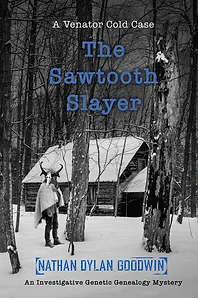Are there really genealogy research brick walls?
Are there really brick walls? Do you still need to figure out who is Michael’s father? What about where Annabelle and Samuel were married?
You may have heard me say in one of my presentations, that I don’t believe there are as many brick walls as genealogists seem to think. My own genealogy has some artificial “brick walls” and I wish I had the time, budget, and more to seek out records everywhere. So many counties, states, and countries probably hold many of my answers. The following are some thought on reasons for that statement about not as many brick walls?
- I hear “I have looked everywhere.” Truly? In every county courthouse, public library, country, state, province, and county archive, and state and county historical society?
- Looked everywhere does NOT mean only multiple websites, but reading through dusty deed books, business records, old diaries, newspaper clippings, membership records, scrapbooks, baby books, attics, basements. What about college and university library special collections?
- Have you read all the microfilmed newspapers that cover all ancestral areas? Most are not online.
- Do you know where to look? Have you read or reread some basic genealogy guides? Have you taken advantage of the many educational opportunities such as classes, courses, institutes, seminars, conferences, webinars, and others? Do you need a basic genealogy class or a refresher?
- Have you and your known relatives done DNA testing with more than one company or transferred DNA results to others when possible? That third cousin match might be to a person with a lot of family memorabilia at home.
- Did you do reasonably exhaustive research on great great grandpa and ALL of his siblings? That older brother you neglected might have one of those obituaries that we all crave, right down to naming his parents, when they died, and what was their residence in the old country.
- Putting together a family or individual timeline helps. It can be done as a table or in a spreadsheet format. Include multiple columns listing years, months, days, places, names, miscellaneous notes, and what is the sources of each item. No source? Add that to your research task list. The timeline will show that you know the family was in Green County Kentucky in 1812 because of a marriage record but you don’t know where they are for the 1830 census.
- Have you started writing about each ancestor? Writing about their lives year by year, place by place, relationship by relationship immediately points out missing details. How do you know that person was born in 1788 and died in 1869? Have you found marriage records for all family members who married? The questions go on and on! Add the missing details to your research task list.
I have task lists for specific places to which I need to travel, for specific countries, and some just by family or individual. They are safely in my computer and are backed up in the cloud. Now I need to find that time and budget to go eliminate those empty names, dates, and places in my family history.



